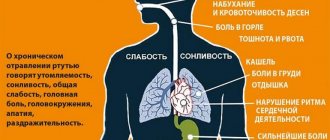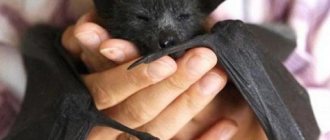Insect control has long become a daily occurrence in the modern world. There are many products that are used for different purposes: getting rid of parasites in the house or in nature (in vegetable gardens, garden plots). The most famous and widely used drug is dichlorvos.
This remedy has been so popularized since Soviet times that in our time it has already become a household name for many people. You should understand in detail what kind of remedy this is, whether it can harm people and what actions to take if the toxin enters the body.
What is it and what is it for?
Dichlorvos is a popular insecticide used to get rid of flying and crawling insects. Used in home and industrial environments.
The composition contains organophosphorus compounds that pose a particular danger to human health. Currently, more gentle chemicals are used to produce dichlorvos, but the risk of poisoning with such a product remains high.
The insecticide has some positive qualities, which makes the substance popular among many people.
Advantages:
- Quick effect on all types of harmful insects,
- Causes poisoning of parasites when ingesting or inhaling the toxin,
- When used correctly, it is low toxic to animals and people,
- Decomposes well in the environment,
- Does not pose a danger to plants.
The disadvantage of dichlorvos is the inability to stay indoors for a long time after treatment.
There are quite a few products on sale with the name “Dichlorvos” and additional prefixes – “Super”, “Neo”. Such chemicals do not contain phosphorus compounds; they contain permethrin and its derivatives, so insecticides have a third class of hazard and are low-toxic.
However, the use of such tools requires the same careful attention. In children and small animals, poisoning occurs faster than in adults. Due to low weight, a high dosage of the toxin acts more intensely.
Old name with new line-up
Most modern housewives are afraid to poison cockroaches with Dichlorvos. On one side of the scale is effectiveness against household pests, and on the other is terrible odor and toxicity. But modern means have little in common with their Soviet counterpart. Manufacturers only took as a basis the familiar name, which is associated among buyers with mercilessness towards household pests.
Soviet cockroach poison is the organophosphate insecticide dimethyldichlorovinylphosphate (abbreviated as dichlorvos). The substance is toxic, merciless to insects, and also dangerous to humans and warm-blooded animals. “Dichlorvos” was used forcedly, since there were no worthy analogues. The dust, merciless towards insects, was even more dangerous for humans, and non-toxic substances had no effect on pests.
The composition of modern Dichlorvos is based on pyrethroids - the least toxic to humans among the known insecticides. These are synthetic analogues of pyrethrins, natural insecticides found in the flowers of some plants (for example, Dalmatian chamomile). Pyrethroids fight insects much more effectively, and their residual activity lasts an order of magnitude longer.
In a hardware store you can buy Dichlorvos without odor or even with a pleasant floral aroma. But this is only the result of adding fragrances. The absence of an unpleasant odor does not mean that you can forget about precautions.
Causes and symptoms of poisoning
Why is dichlorvos intoxication possible? There are several factors that can provoke such poisoning.
We recommend: Hydrochloric acid vapor poisoning - symptoms, first aid
Factors:
- Use in areas with poor ventilation and without appropriate protective equipment,
- Ingestion or injection into the subcutaneous layers for the purpose of suicide,
- Poisoning in children occurs due to negligence,
- The presence of a child, an pregnant woman, or an elderly person during the treatment of the premises.
There are several methods of poisoning: inhalation of vapors, ingestion, contact with the skin. With any of the methods, the respiratory process may be impaired. If dichlorvos enters the bloodstream immediately, after some time a malfunction in the functionality of the liver is diagnosed.
In some cases, there is a sharp disruption of the nervous system. Symptoms of dichlorvos poisoning appear after a short period of time.
Signs:
- Headache,
- Swelling of the mucous membranes of the sinuses,
- Runny nose,
- Head spinning
- Increased body temperature
- Loss of coordination
- Severe nausea and vomiting
- intestinal disorder,
- Visual impairment
- Breathing problems, asthma attacks,
- Increased sweating
- Convulsive manifestations.
Upon contact with the skin, a person is diagnosed with allergic manifestations, itching and burning sensation, and irritation. If dichlorvos gets into the eyes, pain, redness, and intense production of tears are noted.
A person’s condition deteriorates quite quickly, this is especially noticeable if poisoning occurred as a result of ingesting dichlorvos.
Operating principle
The principle of operation of the product can be described in three points.
- Breath. Spreading in the air, insecticide particles enter the cockroach's respiratory tract. Next, absorption into the hemolymph and distribution throughout the body occurs.
- Surface contact. Pyrethroid particles settle on the shell, gradually penetrating the body. Once in the blood, the insecticide has a nerve-paralytic effect.
- Gastrointestinal tract. The chemicals that make up the aerosol settle on surfaces over which cockroaches run. The insect stains its legs, and when it begins to clean them with its jaws, it eats the poison. As it spreads throughout the body, the substance blocks the activity of the central nervous system.
Stages of dichlorvos poisoning
Intoxication with dichlorvos goes through three stages. Each of them is characterized by the presence of certain symptoms.
Stages:
- Increased arousal. A similar period develops a few minutes after poisoning. The stage is characterized by a lack of control over movements, severe drooling, dizziness, and migraine pain is diagnosed. At the first stage, the victim’s blood pressure increases and the heartbeat increases.
- After a few hours, the victim begins the stage of loss of coordination. There is a general deterioration in the condition, the separation of urine and feces is accompanied by pain. During this period, coordination and visual functions are impaired. A person is diagnosed with trembling limbs and convulsions. In the absence of help, loss of consciousness, stupor, pulmonary edema occurs, and death is possible.
- Paralytic stage. The most difficult stage. Characterized by lack of consciousness, paralysis, decreased blood pressure, and the heartbeat becomes rare. In the absence of help, death occurs a day after poisoning.
We recommend: Poisoning with acetone and its vapors - symptoms, first aid
Poisoning in children develops faster than in adults due to their fragile bodies.
First aid and treatment of poisoning
In case of poisoning with such a substance, first aid at home must be provided as quickly as possible.
This will help avoid unpleasant consequences and serious changes in the functioning of organs. First of all, a medical team is called. Before their arrival, it is allowed to carry out activities to alleviate the patient’s condition.
Activity:
- In case of poisoning by dichlorvos vapors, the victim is provided with access to fresh air, taken outside, and loosened from tight clothing.
- The oral cavity is washed with plenty of clean water.
- If the toxin gets on the skin, wash it with soap and water. The procedure should be gentle, without strong pressure.
- Infection of the eyes with dichlorvos requires rinsing with water or a weak solution of soda (a teaspoon per glass of water).
- If poisoning has developed as a result of ingestion of a poisonous drug, then the victim’s stomach must be thoroughly rinsed. After cleaning, it is recommended to take sorbent.
- The patient is given a lot of clean water to drink to reduce the concentration of the toxic substance.
- Before the doctors arrive, the victim is put to bed and given rest.
The first aid provider must follow safety precautions and remember that dichlorvos is well absorbed through the skin. Correctly carried out measures increase the chances of a quick recovery.
Poisoning in any form requires contacting a medical facility. After carrying out the necessary diagnostics, the specialist will select the appropriate treatment option.
Therapy:
- Gastric lavage
- Administration of anticonvulsants
- The use of atropine as an antidote,
- Prescription of drugs that normalize the activity of the heart muscle and other organs,
- For breathing problems, artificial ventilation is used.
Treatment includes following a diet and taking vitamin complexes. The duration of therapy depends on the patient's condition and the degree of poisoning.
How to use the aerosol
It is believed that the treatment procedure with dichlorvos is not complicated, but it requires full compliance with the rules. If you deviate from them, the result is not guaranteed and there may be a threat to human health. Initially, according to the standard, one 190 ml can should be enough for 30 square meters, but it is best to purchase it with a reserve in order to separately walk through secluded corners where pests can hide.
According to the instructions for using dichlorvos neo, the procedure depends on the type of insect:
Flies and mosquitoes - it is necessary to spray the aerosol on glass, window frames, doors and cabinets, as this is where flying insects most often accumulate.- Moth - spray the product in cabinets at a ratio of 2 seconds per 1 cubic meter.
- Cockroaches and bedbugs are the most difficult to deal with. Possible habitats: cracks or wooden furniture parts; the reverse side of paintings, carpets, wall clocks, mirrors; under peeling wallpaper; behind skirting boards and radiators. To be effective, you need to spray directly on the pest itself, so you will need to move or disassemble furniture - a favorite place for bedbugs.
- Fleas - in this situation, walls up to a height of about a meter are treated. It is recommended to throw away the animal’s sleeping place or treat it, and then wash it thoroughly.
- Killing ants is the simplest thing - you don’t need to treat the entire room, just treating the ant paths is enough.
In any case, the can must be held at arm's length at a distance of 20-25 cm from the target. Spray for no more than five seconds.
After treatment, immediately leave the room to avoid inhaling the chemicals. Ventilation can begin within 30-40 minutes for a period of two hours. Afterwards, thoroughly wash all surfaces on which the product has come into contact.
Consequences and prevention
An overdose of dichlorvos leads to serious complications in the absence of the necessary help. What can happen with such intoxication?
We recommend: Chlorine poisoning - what to do at home, symptoms and treatment methods
Complications:
- Heart pathologies,
- Toxic form of hepatitis,
- Kidney diseases,
- Diseases of the lungs and bronchi,
- Disruption of the nervous system.
It is possible to avoid poisoning by using dichlorvos correctly.
Rules:
- Follow the instructions for use,
- Observe safety precautions,
- Do not leave the substance in an accessible place,
- Thoroughly ventilate the room after treatment,
- If you lack experience, it is not recommended to carry out processing yourself.
Dichlorvos poisoning is an unpleasant phenomenon that leads to serious disruption of the functioning of internal organs. If signs of intoxication appear, you must contact a medical facility.
Preparing the room before treatment
Before you start treating the room with the product, you need to do several preparation procedures:
- Make sure that there are no people or animals left in the room.
- Remove all indoor plants when it is safe to do so.
- Remove or cover personal items so that they are not exposed to aerosol.
- To clear out secluded places where insects gather as much as possible: dismantle baseboards, disassemble furniture, turn over mattresses.
- Warn neighbors about your intention to carry out treatment.
- Close all windows and doors to prevent drafts.
- Wear personal protective equipment: gloves, gown, goggles or mask. It is important to protect yourself from direct contact of the substance with the skin.
to the entry “Poisoning with dichlorvos and its vapors - what to do at home”
- Anna:
08/17/2018 at 14:57After reading the article, I was pleasantly surprised. The information was really presented well and clearly, no questions arose while reading, everything was clear. I gained additional knowledge, thank you, good article.
Answer
- serega:
08/19/2018 at 13:18
Dichlorvos poisoning is an unpleasant phenomenon that leads to serious disruption of the functioning of internal organs. If signs of intoxication appear, you must contact a medical facility.
Answer
- Kirill:
08/20/2018 at 23:57
Good article, everything was said correctly, I recently had poisoning, I did everything the same as stated in your article... I wish there were more articles like this
Answer
- Nina:
08/06/2020 at 16:30
I realized that I inhaled dichlorvos during treatment for ants. They treat a cold: cough, fever, runny nose, but did not catch a cold. I understood after reading the article. I need to tell the doctor, maybe all the signs are really from dichlorvos
Answer











